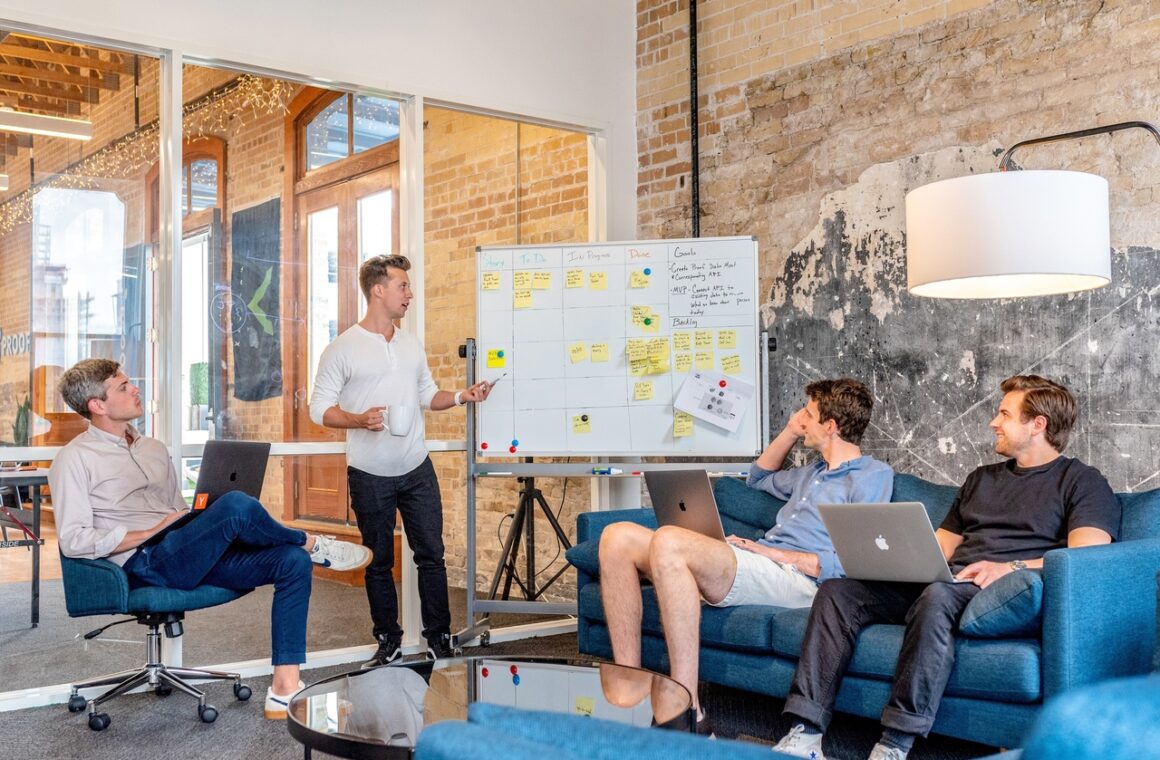Agreement on the use of the en.murs.ai portal and the app.murs.ai system
This agreement defines the terms of use by legal entities, individual entrepreneurs, individuals of materials and services of the site murs.ai and app.murs.ai (hereinafter referred to as the Service / Services), the processing of personal data on the sites en.murs.ai and app.murs.ai.
Limited Liability Company “Malik”, hereinafter referred to as the “Contractor”, on the one hand, publishes this offer agreement on the provision of Services, which is a public contract – an offer (offer) to individuals, individual entrepreneurs, legal entities (hereinafter referred to as the Customer) in accordance with paragraph 2 of Article 437 of the Civil Code of the Russian Federation (Civil Code of the Russian Federation), taking into account that:
1. Terms and definitions
1.1. “Offer” – this offer addressed to individuals, individual entrepreneurs, legal entities, containing all the essential terms of the agreement, which is a standard form, from which the will of the Contractor is seen to conclude an agreement on the conditions specified in this offer (accession agreement) with anyone who responds …
1.2. “Contractor” – Limited Liability Company “Malik”.
1.3. “Offer Acceptance” – the performance by the Customer of the actions specified in this Offer, indicating the acceptance by this person of the terms of the Offer in full, including the performance of actions to fulfill the conditions specified in this Offer in accordance with clause 3 of Art. 434 and clause 3 of Art. 438 of the Civil Code. Acceptance of the Offer means full and unconditional acceptance of its terms. The Offer Acceptance is a confirmation that all and any conditions of the Offer are accepted by the Customer entirely and completely without any reservations and restrictions, while the Offer Acceptance confirms that the Customer is familiar with all the conditions for the provision of Services and the terms of this Offer, that the Customer understands all the conditions for the provision Services and conditions of the Offer that the Customer has exercised the right to receive from the Contractor all and any clarifications regarding the conditions for the provision of Services and the Offer, and also confirms that the conditions for the provision of Services and the Offer fully comply with the will, needs and requirements of the Customer. Acceptance of the Offer means that the Offer does not contain those specified in clause 2 of Art. 428 of the Civil Code of conditions, as well as does not contain other clearly burdensome conditions for the Customer, which the Customer, based on his reasonably understood interests, would not accept if he had the opportunity to participate in determining the terms of the Offer, and the Services specified in this Offer are not imposed on the Customer.
1.4. “Customer” – an individual, individual entrepreneur, legal entity that has entered into an Agreement with the Contractor in written electronic form as a result of the Offer Acceptance and, thereby, has received the right to receive the Contractor’s Services, and fully fulfills its obligations under the Agreement.
1.5. “Agreement” – means a contract for the provision of paid services selected by the Customer through the Contractor’s websites, concluded between the Contractor and the Customer as a result of the Customer’s acceptance of the Offer, giving the Contractor and the Customer the rights and obligations specified in this Offer. Any reference in this Offer to the Agreement (article of the Agreement) and / or its terms means the corresponding link to this Offer (its Article) and / or its terms.
1.6. “Parties” – jointly referred to as the parties to the Agreement – the Contractor and the Customer.
1.7. “Service” —— hardware and software complex, hereinafter also the Contractor’s software, for conducting voice training, as well as team interactions through the communication channels Telegram, Slack. Part of the Service is 1) the Contractor’s website on the Internet, located at murs.ai, 2) a personal account in the Service, located at app.murs.ai, 3) other features, a detailed description of which is presented on the Contractor’s website.
1.8. “Service” / “Services” —— provided by the Contractor under the Agreement. A specific list of Services and their description is indicated on the Contractor’s website. The Services for the Agreement mean the activities of the Contractor related to the provision of advice on the activities of the Customer, in the form of reports, conclusions, recommendations, both by sending electronic messages to the email address specified by the Customer and by transferring physical media to the Customer using courier delivery, as well as provision of other services.
1.9. “User” – an individual or legal entity using the materials of the Service or having access to the materials of the Service, or having access to the services provided by the Service.
2. General conditions
2.1 This agreement is mixed and includes the terms of the license agreement and the service agreement; By accessing the materials of the Service, as well as by sending information and data to the Service, the Customer is considered to have joined
to this Agreement.
2.2 Services under this agreement are provided by the Contractor using the Contractor’s service: Site, server equipment and other necessary infrastructure;
2.3 The use of the Service (clause 1.7. Of the Offer) under this Agreement is provided to the Customer in the form of licenses for the Service and is governed by the legislation on the license agreement;
2.4. The Offer can be accepted by any individual or legal entity intending to receive the Services provided by the Contractor by accepting the conditions contained in the Offer as a whole (i.e., in full and without exception).
2.5. The Contractor has the right to refuse to conclude an agreement on the basis of the Offer in the absence of the technical possibility of providing the Services.
2.6. The use of materials posted on the Services is allowed only with the written consent of Malik LLC or subject to clause 9, clause 10.
3. Subject of the Agreement
3.1. The Contractor undertakes to provide the Customer with a license for the Service on a reimbursable basis in the manner prescribed by the Agreement.
3.2. The Customer undertakes to accept and pay for the Services (Licenses).
3.3. The license is granted for a period in accordance with the subscription period (License) specified on the Contractor’s website.
3.4. The license grants the right to use all the functions (embedded in it) of the Service and other protected results of intellectual property for the purposes of use within the Customer by the Customer’s employees.
4. Procedure for the conclusion of the Agreement
4.1. Based on paragraph 3 of Art. 438 of the Civil Code of the Russian Federation, the unconditional acceptance (acceptance) of the terms of the Offer is considered to be the implementation by the Customer of actions, as a result of which a successful order of the Services will be made, consisting in the selection of the appropriate Services of the Customer, acceptance of the terms of the Offer (by expressing agreement with the Offer). The Offer is accepted by the Customer through the actions specified in the relevant sections of this Offer, in particular, in individual paragraphs of the “Terms and Definitions” section of this Offer.
4.2. In accordance with paragraph 1 of Art. 433 of the Civil Code of the Russian Federation, the date of the conclusion of the Agreement is the date of the Customer’s actions to accept the terms of the Offer, as well as the actions specified in the “Terms and Definitions” section of this Offer, in particular, in the paragraphs “Offer”, “Offer Acceptance”, “Customer”.
5. Rights and obligations of the Parties
5.1. Rights and obligations of the Customer:
5.1.1. The customer undertakes:
5.1.1.1. pay in full for the Services prior to the commencement of their provision. The fulfillment by the Customer of the obligation to pay for the Services, as well as the delivery of tangible media, is possible in the following ways: by performing an operation to pay for services using bank cards, by performing transactions with electronic money in accordance with Federal Law No. 161-FZ of June 27, 2011 ” On the national payment system “, as well as by wire transfer of funds to the settlement account of the Contractor;
5.1.1.2. inform the Contractor of information (including personal data) necessary for the Contractor to provide the Customer with the Services and fulfill his other obligations established by the Agreement and the current legislation of the Russian Federation;
5.1.1.3. independently monitor all and any updates to the information posted on the Contractor’s website, including independently monitor changes in the conditions for the provision of the Services, changes in this Offer and the Agreement and any other materials that are directly or indirectly related to the provision of the Service or affect them. The customer is deprived of the right to refer to the lack of awareness of these changes, if such changes are posted on the Contractor’s website.
5.1.2. The customer has the right:
5.1.2.1. receive the ordered Service, subject to prepayment for the Service provided.
5.2. The rights and obligations of the Contractor:
5.2.1. The Contractor undertakes:
5.2.1.1. provide the Service selected by the Customer;
5.2.1.2. send by mail or electronic communication to the Customer the acceptance certificate for the services rendered within 10 (ten) working days from the date of the actual request by the Customer of the acceptance certificate for the services rendered by request via the support chat in the personal account of the Service;
5.2.1.3. provide the Service with high quality, taking into account the description of the Services that were selected by the Customer;
5.2.2. The contractor has the right:
5.2.2.1. refuse to provide the Service if the Customer has not paid for the Service;
5.2.2.2. refuse to provide the Service if there is no technical ability to provide the Services;
5.2.2.3. not to admit to the receipt of the Services persons whose data provided at the conclusion of the Agreement do not coincide with the data of persons applying for the provision of the Services immediately before the commencement of the provision of the Services;
5.2.2.4. independently choose the form of the provision of the Services, taking into account the conditions for the provision of the Services, selected by the Customer;
5.2.2.5. at any time change the description of the Services in whole or in part, without prior notice to the Customer. Such changes and additions take effect immediately after the appropriate notification, which can be sent to the Customer in any form, including, but not limited to, posting the relevant notification on the Contractor’s website, and / or sending a personal notification, a message about the specified fact by e-mail of the Customer, and / or otherwise;
5.2.2.6. The Contractor has the right to provide personal discounts to Customers based on internal loyalty policies.
6. Termination of the Agreement
6.1. The contract can be terminated:
6.1.1. on the initiative of either of the Parties in case of violation by the other Party of the terms of the Agreement, with written notification of the other Party, from the moment of receipt of such notification;
6.1.2. on other grounds stipulated by the Agreement, as well as by the current legislation.
6.2. In case of early termination of the provision of the Services upon termination of the Agreement, the unspent part of the payment is not returned to the Customer, being reimbursement of the Contractor’s expenses for the provision of the Services to the Customer.
7. Responsibility of the Parties
7.1. The customer is independently responsible for the purchase, installation and operation of the equipment necessary for the provision of services, and also assumes all related costs.
7.2. The Customer fully compensates for losses caused to the Contractor by violation of the terms of the Agreement by the Customer or a third party in whose interests the Customer entered into the Agreement.
7.3. The Customer is responsible for the completeness and accuracy of the information (including personal data) provided to the Contractor when ordering the Services. The Customer independently and in full bears all the risks associated with the lack of the Contractor’s current information (including personal data).
7.4. The parties are exempt from liability for non-performance or improper performance of their obligations under the Agreement if they prove that proper performance was impossible due to force majeure circumstances that the parties could not foresee and avoid – force majeure. In this case, the presence of force majeure circumstances extends the term for the Parties to fulfill their obligations under the Agreement until the termination of the corresponding force majeure circumstances. If these circumstances are valid for more than 30 (thirty) days, the Parties have the right to unilaterally terminate this Agreement.
7.5. The service is the result of the intellectual activity of the Contractor and is protected by applicable law.
7.6. The Service does not use any elements in violation of the rights of third parties.
7.7. The customer agrees that no software is free from errors. The service is provided with functions standard for all customers and partners on the generally accepted in world practice principle “as it is” (“as is”). The Contractor does not provide any guarantees, explicit or implied, that the software will meet the requirements or expectations of the Customer, will meet the goals and objectives of the Customer.
7.8. The Customer agrees that to work with the Software, the Customer must use software (web browsers, operating systems, etc.) and equipment (personal computers, network equipment, etc.) produced and provided by third parties, and the Contractor is not responsible for their quality. work.
7.9. The customer guarantees that he will not copy, modify, translate, decompile, disassemble, redesign or in any other way attempt to translate the object code of the software into a human-readable form, or perform any derivative actions, as well as not allow anyone to do the above. , except for the cases expressly provided for by the current legislation.
8. Procedure for consideration of claims and disputes
8.1. The Customer’s claim for non-fulfillment and / or improper fulfillment by the Contractor of its obligations under the Agreement is presented in paper writing and is subject to registration on the day it is received by the Contractor. The claim shall be accompanied by the documents necessary for the consideration of the claim, which must contain information about non-fulfillment or improper fulfillment of the Contractor’s obligations under the Agreement. The term for responding to a claim is 20 (twenty) days from the date of receipt of the claim.
8.2. If the claim was recognized by the Contractor as justified, the identified deficiencies must be eliminated. Refusal to satisfy the claim must be reasoned. The Customer may be asked to receive the Service at a different time, a discount may be offered, or additional services may be offered.
8.3. All disputes directly or indirectly related to the Offer and the Agreement concluded as a result of the Offer Acceptance are subject to consideration in court at the location of the Contractor, unless other jurisdiction is determined by the applicable legislation of the Russian Federation. Compliance with the claim procedure for resolving a dispute by the Customer before going to court is mandatory.
9. Use of materials.
Uses
9.1. The use of materials means reproduction, distribution, reprint, public display, broadcasting, communication by cable, translation, processing, communication to the public and other methods of use provided for by the current legislation of the Russian Federation.
9.2. Use free of charge and without written consent: 9.2.1. Users have the right to freely: – free of charge to quote the amount of materials on the Site in volume,
justified by the purpose of the citation. Such citation should contain a link to the source. At the same time, Users are obliged in each case of using news materials to provide a link to the source and a hyperlink to the page of the site from which the specified materials were borrowed.
9.2.2. The Service provides individuals and legal entities mentioned in the materials of the Site with the right to free reproduction, distribution, reprint and other methods of bringing to the public the materials containing such references.
9.3. Other uses:
9.3.1. Commercial use of the materials of the Edition is carried out on the basis of agreements concluded in writing.
9.3.2. Any use of photo, graphic, video, audio and other materials posted on the Site, owned by the Publishing and other third parties is prohibited.
9.3.3. If it is necessary to use the materials of the Publication specified in clause 2.3.2 of these rules belonging to the Publication, Users are obliged to obtain written permission (consent) of the Publication to use such materials on a reimbursable basis.
10. Obligations of Users when using materials
10.1. When using the materials of the Edition for any purpose, a link to the Site of the Edition is required:
10.1.1. in printed publications or in other forms on tangible media Users are obliged in each case of using materials to indicate the source of the site murs.ai
10.1.2. on the Internet or other forms of use in electronic form, Users in each case of using materials are obliged to place a hyperlink to the Site – murs.ai
10.2. When using materials, processing of their original text is not allowed. The reduction of the material is possible only if it does not lead to a distortion of its meaning. In this case, Users are solely responsible for distorting the meaning of the materials.







